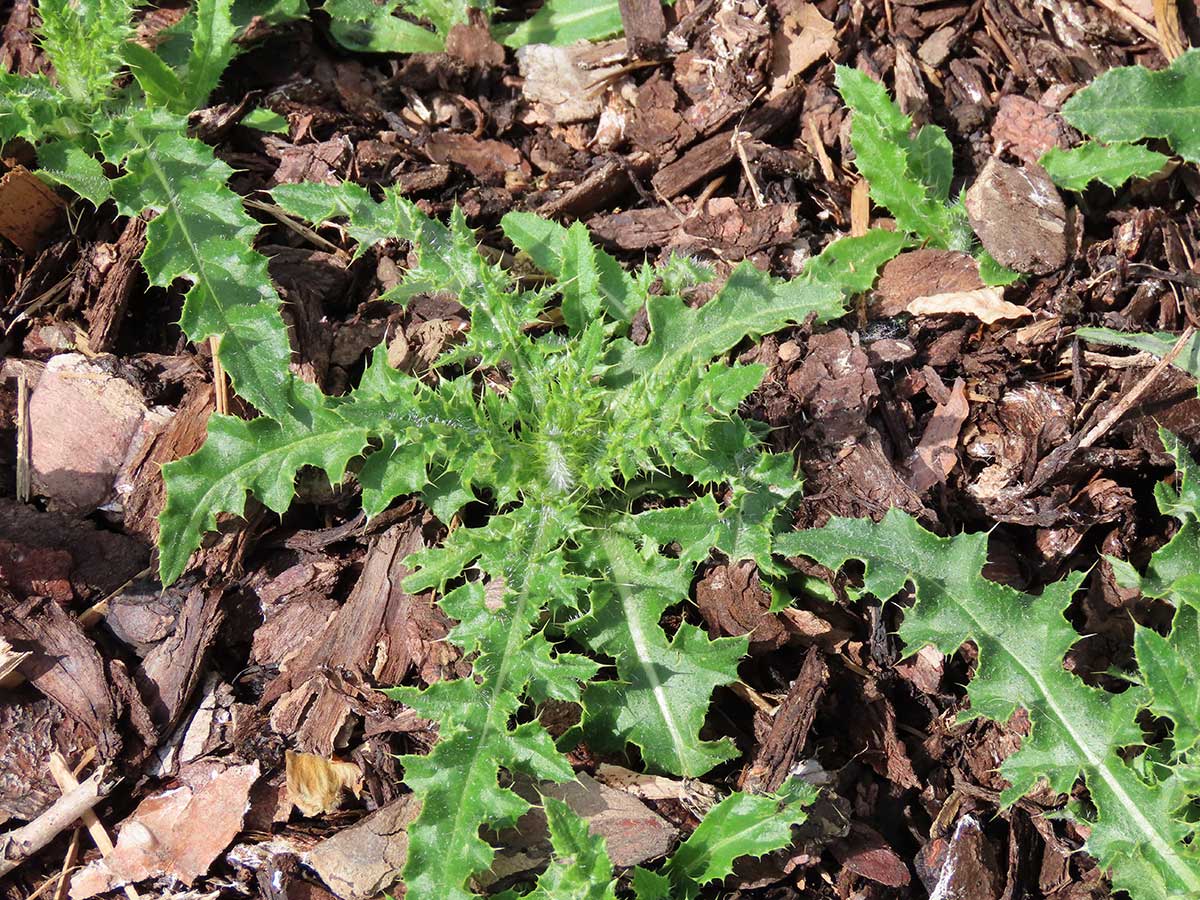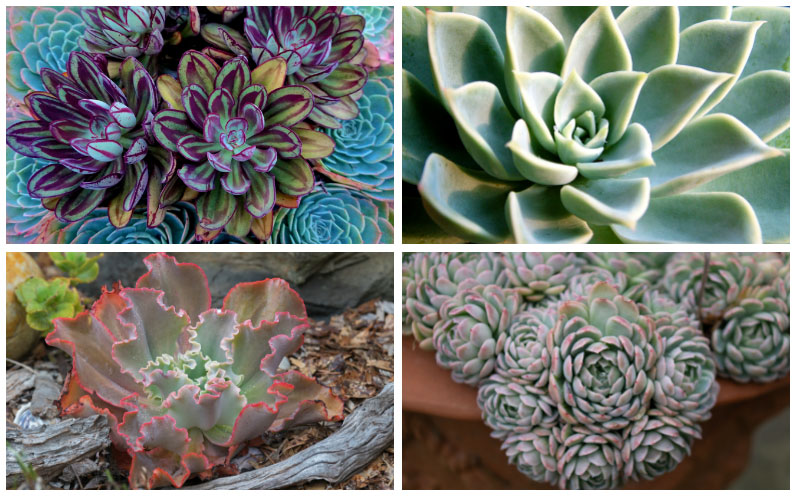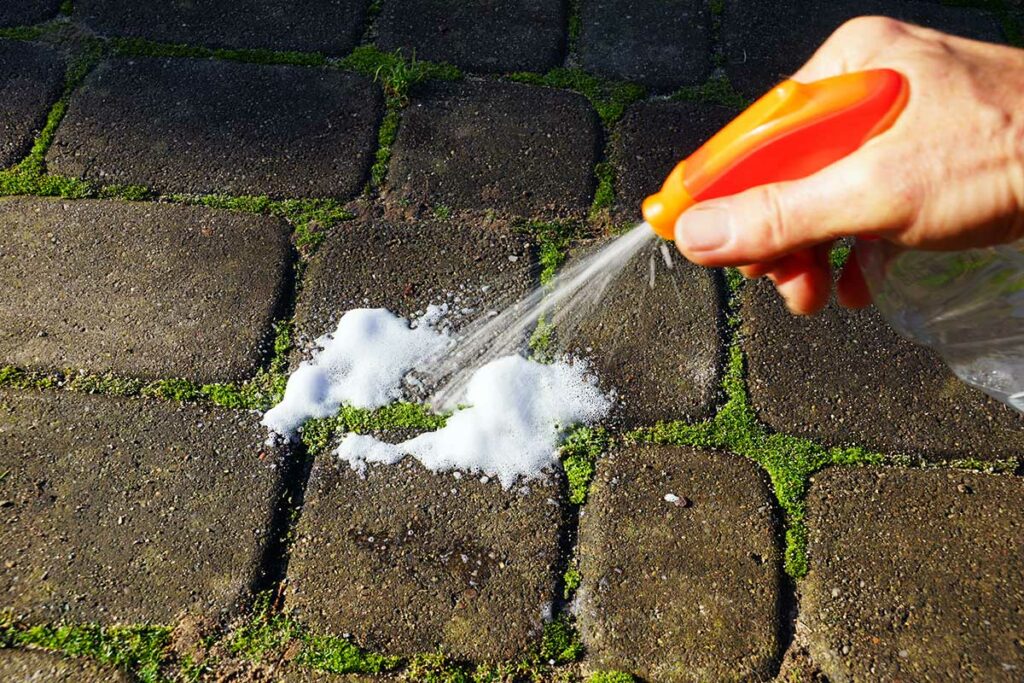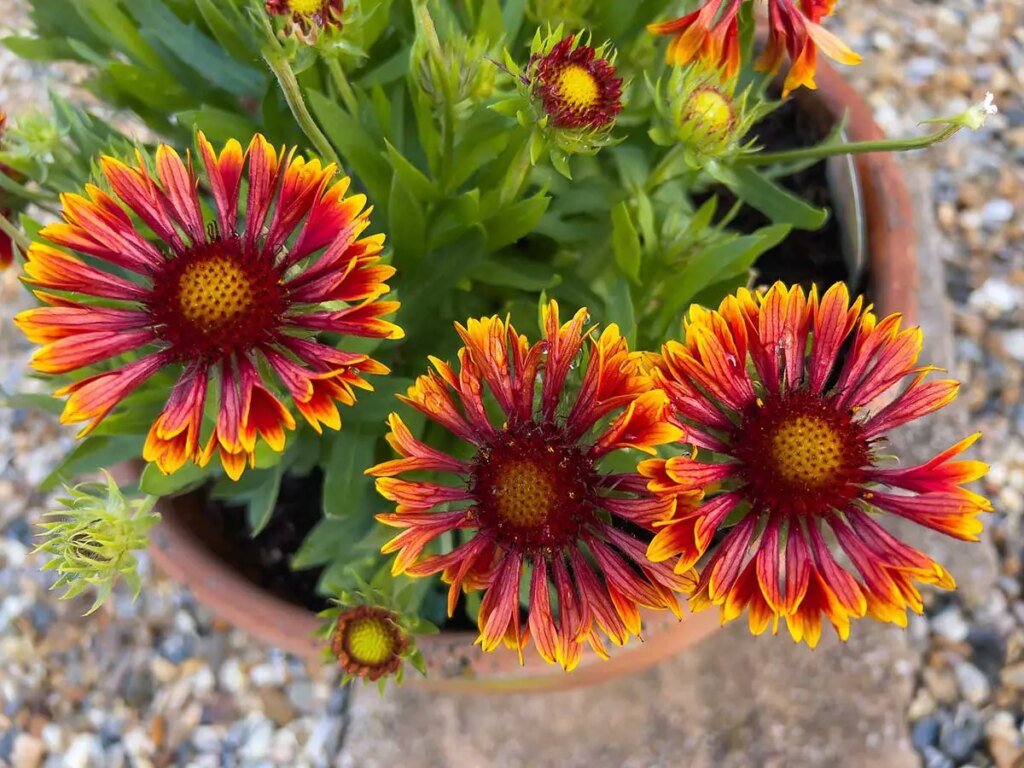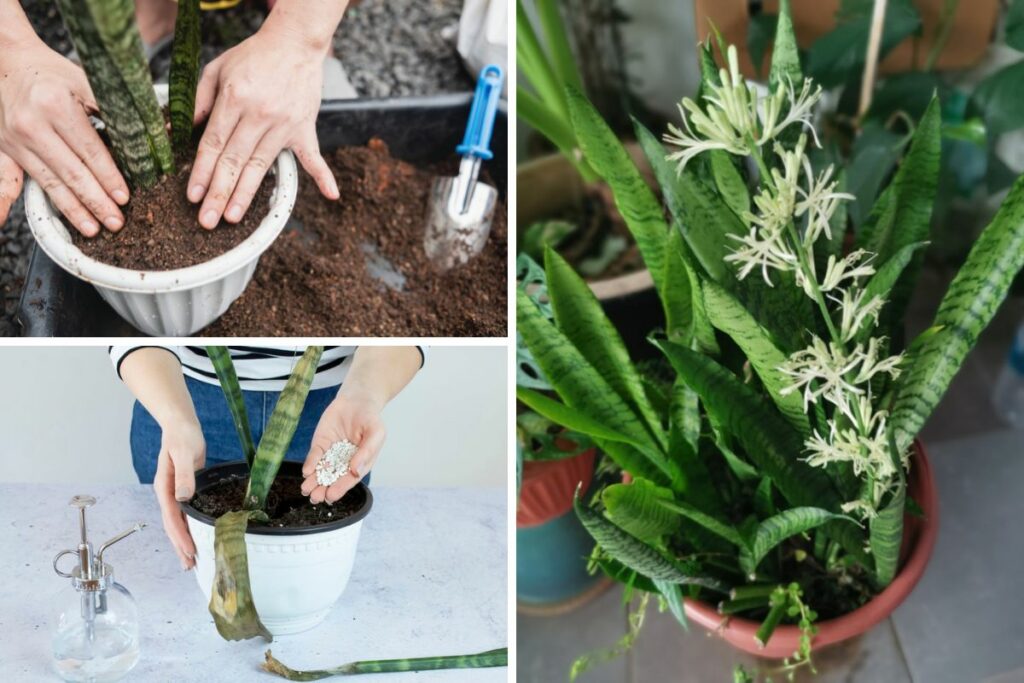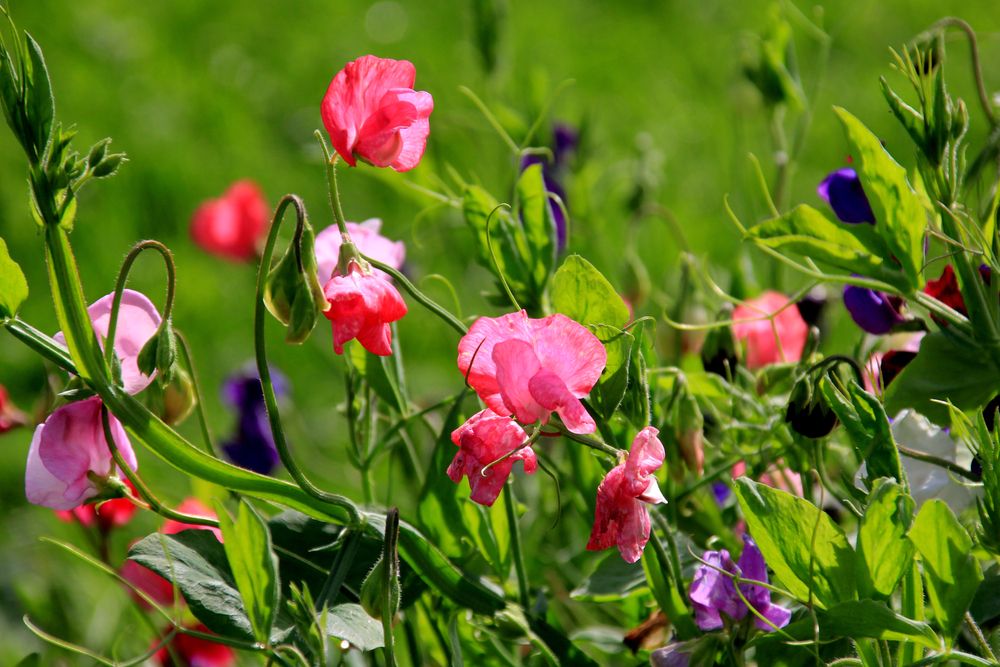
Sweet peas are a delightful addition to any garden, offering vibrant colors, a delicate fragrance, and a wonderful climbing nature.
It’s no wonder that many gardeners eagerly plant these annual flowers each year, eagerly anticipating their cheerful presence. One of the keys to successfully growing sweet peas is providing them with the proper nutrition.
Understanding how and when to fertilize sweet peas is crucial for their optimal growth and beautiful blooms.
When it comes to fertilizing sweet peas, there are some helpful tips and techniques that can enhance your garden’s overall appearance and bring out the best in these lovely climbers.
By carefully selecting the type of fertilizer, timing the applications, and incorporating organic matter, you’ll be well on your way to enjoying a thriving sweet pea garden.
In this article, we will outline some valuable advice to ensure your sweet peas receive the nutrients they need, creating a backdrop of enchanting flowers for your outdoor space.
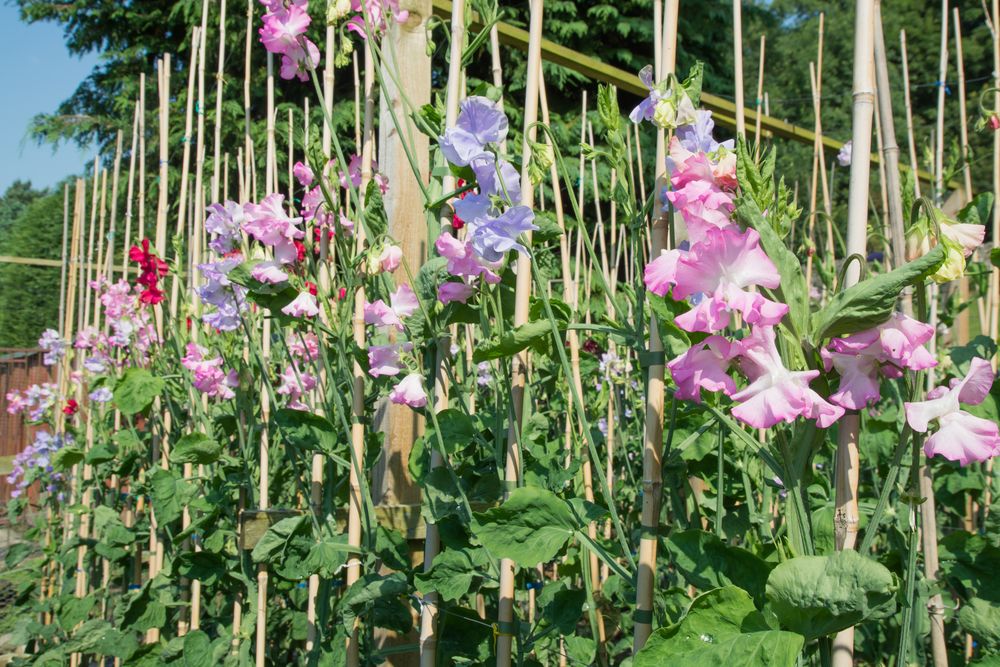
By following these simple guidelines, you’ll be rewarded with healthy, flourishing sweet peas that provide color and fragrance to your garden throughout the season.
Fundamentals of Fertilizing Sweet Peas
Sweet peas are beautiful, fragrant flowers that can enhance any garden. To ensure the best growth and blooms, proper fertilization is essential. In this section, we will discuss soil preparation and fertilizer types to help you achieve the lushest sweet peas.
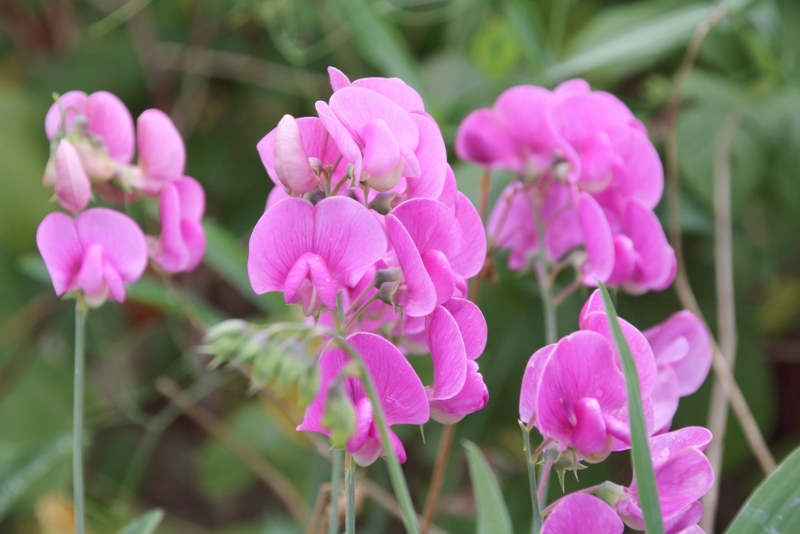
Soil Preparation
The first step in fertilizing sweet peas is preparing the soil. A well-prepared soil bed will provide the necessary nutrients and a healthy environment for your sweet peas to thrive. Keep the following points in mind for soil preparation:
- Drainage: Sweet peas prefer well-draining soil. Ensure your planting site allows for water to drain easily, preventing root rot issues.
- pH Level: The ideal pH level for sweet peas is between 6.0 and 7.0. Test your soil, and if necessary, adjust the pH by adding lime (to raise pH) or sulfur (to lower pH).
- Organic Matter: Incorporate organic matter, such as compost or aged manure, into the soil to improve nutrient availability and enhance soil structure.
Fertilizer Types
Choosing the right type of fertilizer is crucial for the healthy growth of your sweet peas. There are several types of fertilizers that can be used, each with their own benefits:
- Granular Fertilizers: These are slow-release fertilizers that feed sweet peas over a longer period. Apply granular fertilizer before planting by working it into the soil, and follow the manufacturer’s instructions for the correct amount.
- Liquid Fertilizers: These fast-acting fertilizers can be used to give sweet peas a nutrient boost, especially during the flowering season. Dilute the liquid fertilizer as per the label recommendations and apply it to the soil around the base of the plants.
- Organic Fertilizers: Organic options, such as bone meal or fish emulsion, provide multiple benefits, including feeding sweet peas and improving soil health. Follow label instructions for application rates and frequencies.
Remember never to over-fertilize, as too much fertilizer can harm your sweet peas and inhibit blooming. Always follow the manufacturer’s recommendations for application rates and frequencies. By maintaining proper soil preparation and using the right type of fertilizer, your sweet peas will grow strong and produce stunning blooms for you to enjoy in your garden.
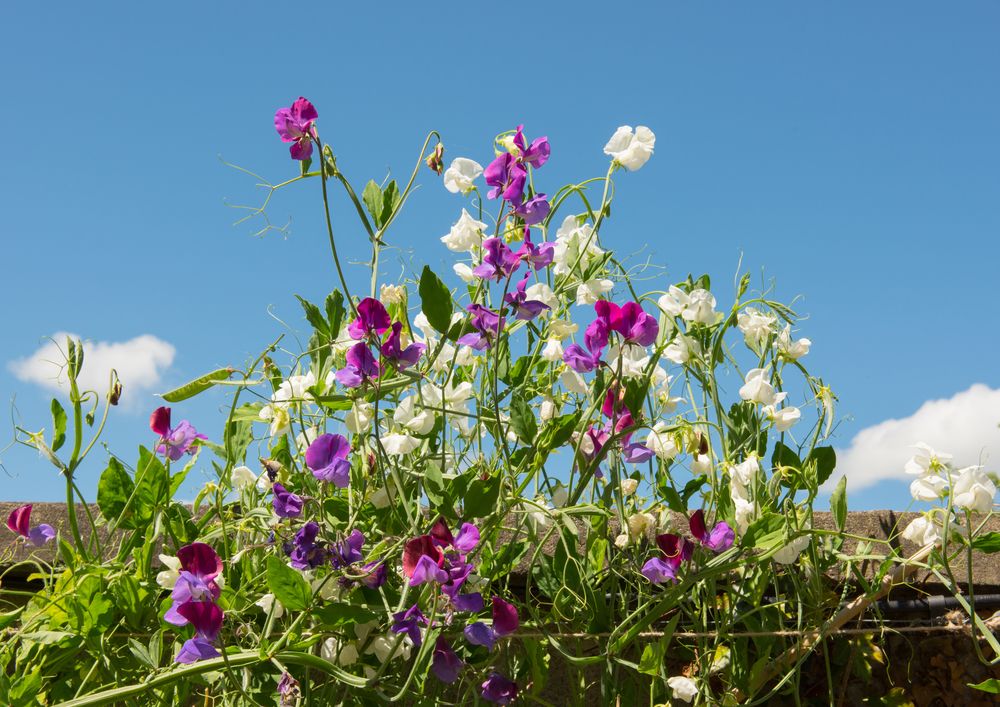
Timing and Frequency
When to Start
Sweet peas are cool-season plants and it’s best to start fertilizing them in the early stages of their growth. You can begin applying fertilizer when the sweet pea seedlings emerge, or you may choose to wait until they develop their first set of leaves. The key is to provide the nutrients they need for strong growth in a friendly manner.
Frequency Throughout Growth
Fertilize sweet peas with a balanced, slow-release fertilizer, such as 10-10-10, every four to six weeks throughout their growth period. This consistent feeding schedule ensures the plants receive the essential nutrients for proper development and blooming. Make sure to follow the recommended application rates mentioned on the fertilizer label and avoid over-fertilizing, as this can lead to lush foliage but fewer flowers.
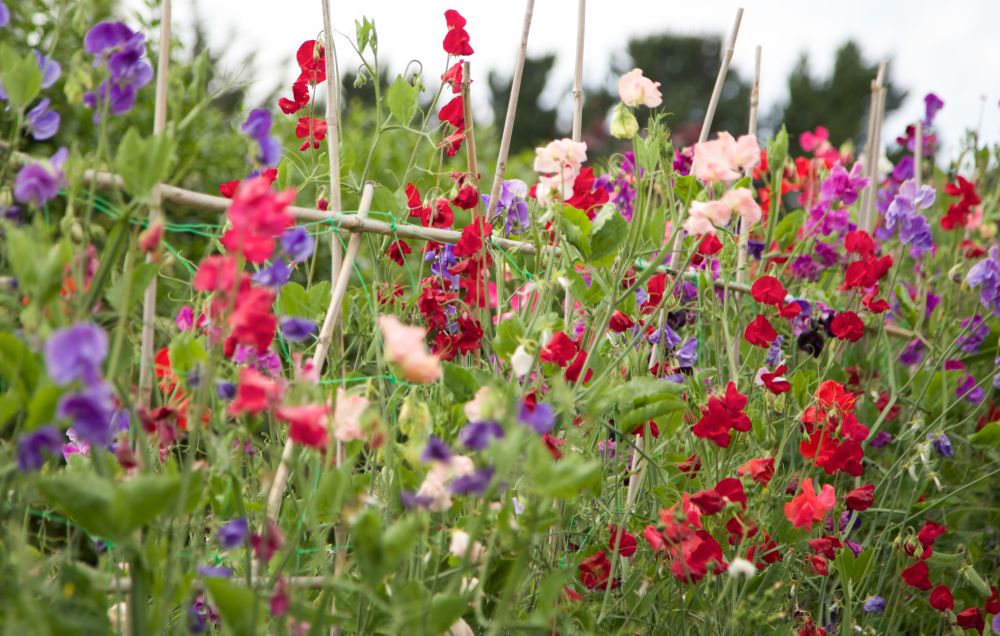
Fertilizer Application Techniques
Sweet peas, like most plants, benefit from proper fertilization. In this section, we’ll discuss two common techniques for applying fertilizer to sweet peas: granular and liquid fertilizers.
Granular Fertilizers
Granular fertilizers are a popular choice for sweet peas. They are easy to apply and provide a slow-release of nutrients. To apply a granular fertilizer:
- Choose an appropriate fertilizer for sweet peas, preferably one with a balanced N-P-K ratio.
- Scatter the granules around the base of the plant, following the recommended application rate on the package.
- Gently scratch the fertilizer into the top layer of soil using a rake or your hands.
- Water the area thoroughly to help distribute the nutrients throughout the soil.
Some points to keep in mind when using granular fertilizers:
- Don’t apply granular fertilizers too close to the stem, as this may cause “fertilizer burn” or other damage.
- Check the manufacturer’s instructions for proper application rates and timing.
Liquid Fertilizers
Liquid fertilizers are another great option for fertilizing sweet peas. They are quickly absorbed by the plant, providing almost immediate effects. To apply a liquid fertilizer:
- Dilute the liquid fertilizer according to the package instructions.
- Pour the diluted solution directly onto the soil at the base of the sweet pea plant. Avoid splashing it onto the foliage.
- Apply the liquid fertilizer during the cooler parts of the day, such as early morning or late afternoon, to prevent evaporation.
Here are a few helpful tips for using liquid fertilizers:
- Regularly apply liquid fertilizers throughout the growing season for optimal results.
- Make sure to wash your hands thoroughly after handling liquid fertilizers, as some may be harmful if ingested or absorbed through the skin.
By using these techniques and following the manufacturer’s guidelines, you can effectively fertilize your sweet peas, promoting strong growth and beautiful blooms. Happy gardening!
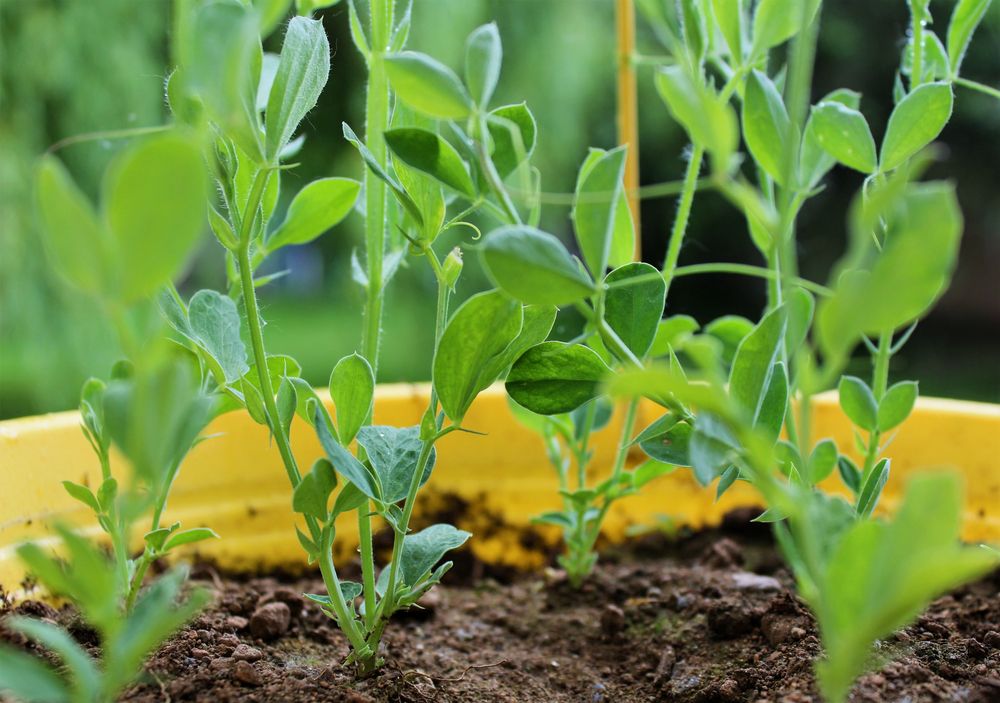
Troubleshooting Common Issues
Sometimes, even with the best care and attention, sweet peas can encounter a few common issues related to fertilization. In this section, we will go through some of these problems and provide helpful guidance on how to address them.
Over-Fertilizing
Over-fertilizing your sweet peas can lead to various problems, such as excessive foliage growth at the expense of flowers, weak stems, and increased susceptibility to disease. Here are a few tips to help rectify the situation:
- Cease fertilizing: Immediately stop adding any more fertilizer to let the plant recover.
- Flush the soil: Water the plant generously to help “flush out” excess nutrients from the soil. Take care not to overwater, but ensure the soil is thoroughly moist.
- Prune unhealthy growth: Trim away any weak or excessively leafy growth to encourage the plant to focus on developing flowers and stronger stems.
Under-Fertilizing
On the other hand, under-fertilizing sweet peas can result in poor growth, fewer flowers, and muted colors. If you suspect you’ve been under-fertilizing, consider the following steps:
- Increase fertilizer application: Gradually increase the amount of fertilizer used, but avoid applying too much at once to prevent stress or shock to the plant.
- Choose the right fertilizer: Make sure you are using a fertilizer that is suited for sweet peas and contains the appropriate nutrients. Consider using a balanced, slow-release fertilizer to ensure a steady supply of nutrients.
- Monitor growth closely: Keep track of your plant’s growth and flowering patterns. Adjust your fertilization regimen accordingly to find the optimal balance and to ensure your sweet peas receive the nutrients they need for healthy growth.

